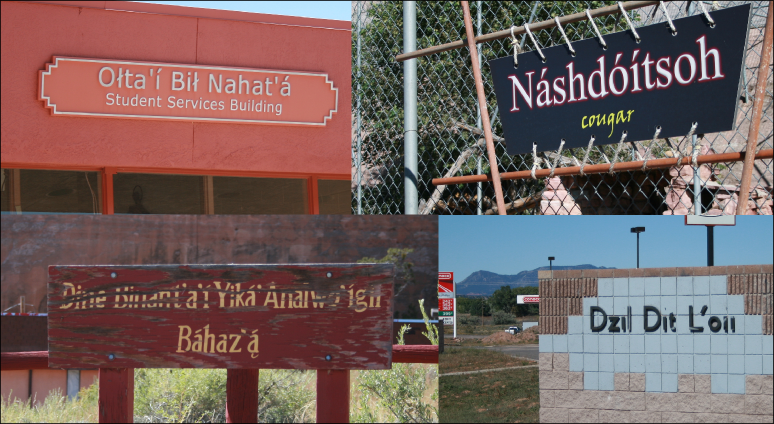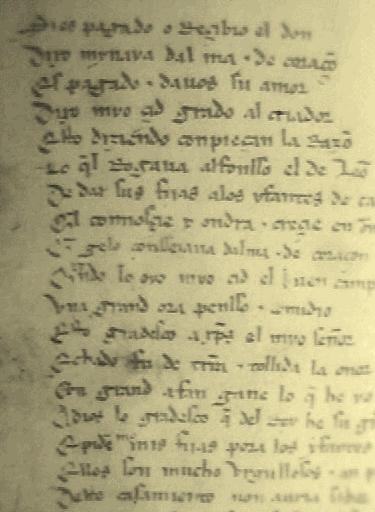|
Ogonek
The tail or ( ; Polish: , "little tail", diminutive of ) is a diacritic hook placed under the lower right corner of a vowel in the Latin alphabet used in several European languages, and directly under a vowel in several Native American languages. It is also placed on the lower right corner of consonants in some Latin transcriptions of various indigenous languages of the Caucasus mountains. An ogonek can also be attached to the bottom of a vowel in Old Norse or Icelandic language, Old Icelandic to show length or vowel affection (linguistics), affection. For example, in Old Norse, ''ǫ'' represents the Old Norwegian vowel , which in Old Icelandic merges with ''ø'' ‹ö› and in modern Scandinavian languages is represented by the letter ''å''. Use * Avestan language, Avestan romanization (letters ''ą'', ''ą̇'', ''m̨'') * Cahto language, Cahto (''ą'', ''ę'') * Cayuga language, Cayuga (''ę'', ''ǫ'') * Chickasaw language, Chickasaw (''ą'', ''į'', ''ǫ'') * Chipewyan ... [...More Info...] [...Related Items...] OR: [Wikipedia] [Google] [Baidu] |
Navajo Language
Navajo or Navaho ( ; Navajo: or ) is a Southern Athabaskan languages, Southern Athabaskan language of the Na-Dene languages, Na-Dené family, through which it is related to languages spoken across the western areas of North America. Navajo is spoken primarily in the Southwestern United States, especially in the Navajo Nation. It is one of the most widely spoken Indigenous languages of the Americas#Northern America, Native American languages and is the most widely spoken north of the Mexico–United States border, with almost 170,000 Americans speaking Navajo at home as of 2011. The language has struggled to keep a healthy speaker base, although this problem has been alleviated to some extent by extensive education programs in the Navajo Nation. In World War II, speakers of the Navajo language joined the military and developed a code for sending secret messages. These Code talker#Navajo, code talkers' messages are widely credited with saving many lives and winning some of the ... [...More Info...] [...Related Items...] OR: [Wikipedia] [Google] [Baidu] |
Diacritic
A diacritic (also diacritical mark, diacritical point, diacritical sign, or accent) is a glyph added to a letter or to a basic glyph. The term derives from the Ancient Greek (, "distinguishing"), from (, "to distinguish"). The word ''diacritic'' is a noun, though it is sometimes used in an attributive sense, whereas ''diacritical'' is only an adjective. Some diacritics, such as the acute , grave , and circumflex (all shown above an 'o'), are often called ''accents''. Diacritics may appear above or below a letter or in some other position such as within the letter or between two letters. The main use of diacritics in Latin script is to change the sound-values of the letters to which they are added. Historically, English has used the diaeresis diacritic to indicate the correct pronunciation of ambiguous words, such as "coöperate", without which the letter sequence could be misinterpreted to be pronounced . Other examples are the acute and grave accents, which can indica ... [...More Info...] [...Related Items...] OR: [Wikipedia] [Google] [Baidu] |
Lithuanian Language
Lithuanian (, ) is an East Baltic languages, East Baltic language belonging to the Baltic languages, Baltic branch of the Indo-European language family. It is the language of Lithuanians and the official language of Lithuania as well as one of the official languages of the European Union. There are approximately 2.8 million native Lithuanian speakers in Lithuania and about 1 million speakers elsewhere. Around half a million inhabitants of Lithuania of non-Lithuanian background speak Lithuanian daily as a second language. Lithuanian is closely related to neighbouring Latvian language, Latvian, though the two languages are not mutually intelligible. It is written in a Latin script. In some respects, some linguists consider it to be the most conservative (language), conservative of the existing Indo-European languages, retaining features of the Proto-Indo-European language that had disappeared through development from other descendant languages. History Among Indo-European languag ... [...More Info...] [...Related Items...] OR: [Wikipedia] [Google] [Baidu] |
Winnebago Language
The Ho-Chunk language (), also known as Winnebago, is the language of the Ho-Chunk people of the Ho-Chunk Nation of Wisconsin and Winnebago Tribe of Nebraska. The language is part of the Siouan language family and is closely related to other Chiwere Siouan dialects, including those of the Iowa, Missouria, and Otoe. "Winnebago", a name now used for the Ho-Chunk who were forcibly removed to Nebraska, is an exonym, an Anglicization of the Sauk and Fox word ''Oinepegi''. The anglicized form of the endonym is "Ho-Chunk". Phonology Phonemic inventory Ho-Chunk's vowel sounds are distinguished by nasality and length. That is to say, the use of a nasal vowel or a long vowel affects a word's meaning. This is evident in examples such as compared to , and compared to . All of Ho-Chunk's vowels show a length distinction, but only have nasal counterparts. Ho-Chunk's consonants are listed in the following table: Typical of Mississippi Valley Siouan languages, Ho-Chunk ... [...More Info...] [...Related Items...] OR: [Wikipedia] [Google] [Baidu] |
Nasalization
In phonetics, nasalization (or nasalisation in British English) is the production of a sound while the velum is lowered, so that some air escapes through the nose during the production of the sound by the mouth. An archetypal nasal sound is . In the International Phonetic Alphabet, nasalization is indicated by printing a tilde diacritic above the symbol for the sound to be nasalized: is the nasalized equivalent of , and is the nasalized equivalent of . A subscript diacritic , called an or , is sometimes seen, especially when the vowel bears tone marks that would interfere with the superscript tilde. For example, are more legible in most fonts than . Nasal vowels Many languages have nasal vowels to different degrees, but only a minority of world languages around the world have nasal vowels as contrasting phonemes. That is the case, among others, of French, Portuguese, Hindustani, Nepali, Breton, Gheg Albanian, Hmong, Hokkien, Yoruba, and Cherokee. Those nasal vo ... [...More Info...] [...Related Items...] OR: [Wikipedia] [Google] [Baidu] |
Chipewyan Language
Chipewyan or Dënesųłinë́ (ethnonym: ), often simply called Dëne, is the language spoken by the Chipewyan people of northwestern Canada. It is categorized as part of the Northern Athabaskan language family. It has nearly 12,000 speakers in Canada, mostly in Saskatchewan, Alberta, Manitoba and the Northwest Territories.Statistics Canada: 2006 Census Sum of 'Chipewyan' and 'Dene'. It has official status only in the Northwest Territories, alongside eight other [...More Info...] [...Related Items...] OR: [Wikipedia] [Google] [Baidu] |
Iota Subscript
The iota subscript is a diacritic mark in the Greek alphabet shaped like a small vertical stroke or miniature iota placed below the letter. It can occur with the vowel letters eta , omega , and alpha . It represents the former presence of an offglide after the vowel, forming a so‐called "long diphthong". Such diphthongs (i.e., )—phonologically distinct from the corresponding normal or "short" diphthongs (i.e., )—were a feature of ancient Greek in the pre-classical and classical eras. The offglide was gradually lost in pronunciation, a process that started already during the classical period and continued during the Hellenistic period, with the result that, from approximately the 1st century BC onwards, the former long diphthongs were no longer distinguished in pronunciation from the simple long vowels (long monophthongs) respectively. During the Roman and Byzantine eras, the iota, now mute, was sometimes still written as a normal letter but was often simply le ... [...More Info...] [...Related Items...] OR: [Wikipedia] [Google] [Baidu] |
Fronting (sound Change)
In phonology, fronting is a sound change in which a vowel or consonant becomes fronted, advanced or pronounced further to the front of the vocal tract than some reference point. The opposite situation, in which a sound becomes pronounced further to the back of the vocal tract, is called backing or retraction. Fronting may be triggered by a nearby sound, in which case it is a form of assimilation, or may occur on its own. Examples Assimilation In i-mutation and Germanic umlaut, a back vowel is fronted under the influence of or in a following syllable. This is assimilation. Vowel shifts In the Attic and Ionic dialects of Ancient Greek, Proto-Greek close back were fronted to . This change occurred in all cases and was not triggered by a nearby front consonant or vowel. Similarly in French and Occitan, this sound change also occurred. In Old English and Old Frisian Old Frisian was a West Germanic language spoken between the late 13th century and the end of 16th ce ... [...More Info...] [...Related Items...] OR: [Wikipedia] [Google] [Baidu] |
Ojibwe Language
Ojibwe ( ), also known as Ojibwa ( ), Ojibway, Otchipwe,R. R. Bishop Baraga, 1878''A Theoretical and Practical Grammar of the Otchipwe Language''/ref> Ojibwemowin, or Anishinaabemowin, is an Indigenous languages of the Americas, indigenous language of North America of the Algonquian languages, Algonquian language family.Goddard, Ives, 1979.Bloomfield, Leonard, 1958. The language is characterized by a series of dialects that have local names and frequently local writing systems. There is no single dialect that is considered the most prestigious or most prominent, and no standard writing system that covers all dialects. Dialects of Ojibwemowin are spoken in Canada, from southwestern Quebec, through Ontario, Manitoba and parts of Saskatchewan, with outlying communities in Alberta;Nichols, John, 1980, pp. 1–2. and in the United States, from Michigan to Wisconsin and Minnesota, with a number of communities in North Dakota and Montana, as well as groups that were removed to Kansas ... [...More Info...] [...Related Items...] OR: [Wikipedia] [Google] [Baidu] |
Romance Languages
The Romance languages, also known as the Latin or Neo-Latin languages, are the languages that are Language family, directly descended from Vulgar Latin. They are the only extant subgroup of the Italic languages, Italic branch of the Indo-European languages, Indo-European language family. The five list of languages by number of native speakers, most widely spoken Romance languages by number of native speakers are: * Spanish language, Spanish (489 million): official language in Spain, Mexico, Equatorial Guinea, the Sahrawi Arab Democratic Republic, SADR, Cuba, Dominican Republic, Puerto Rico and most of Central America, Central and South America * French language, French (310 million): official in 26 countries * Portuguese language, Portuguese (240 million): official in Portugal, Brazil, Portuguese-speaking African countries, Portuguese-speaking Africa, Timor-Leste and Macau * Italian language, Italian (67 million): official in Italy, Vatican City, San Marino, Switzerland; mi ... [...More Info...] [...Related Items...] OR: [Wikipedia] [Google] [Baidu] |
Vulgar Latin
Vulgar Latin, also known as Colloquial, Popular, Spoken or Vernacular Latin, is the range of non-formal Register (sociolinguistics), registers of Latin spoken from the Crisis of the Roman Republic, Late Roman Republic onward. ''Vulgar Latin'' as a term is both controversial and imprecise. Spoken Latin existed for a long time and in many places. Scholars have differed in opinion as to the extent of the differences, and whether Vulgar Latin was in some sense a different language. This was developed as a theory in the nineteenth century by François Just Marie Raynouard, Raynouard. At its extreme, the theory suggested that the written register formed an elite language distinct from common speech, but this is now rejected. The current consensus is that the written and spoken languages formed a continuity much as they do in modern languages, with speech tending to evolve faster than the written language, and the written, formalised language exerting pressure back on speech. ''Vulgar ... [...More Info...] [...Related Items...] OR: [Wikipedia] [Google] [Baidu] |





